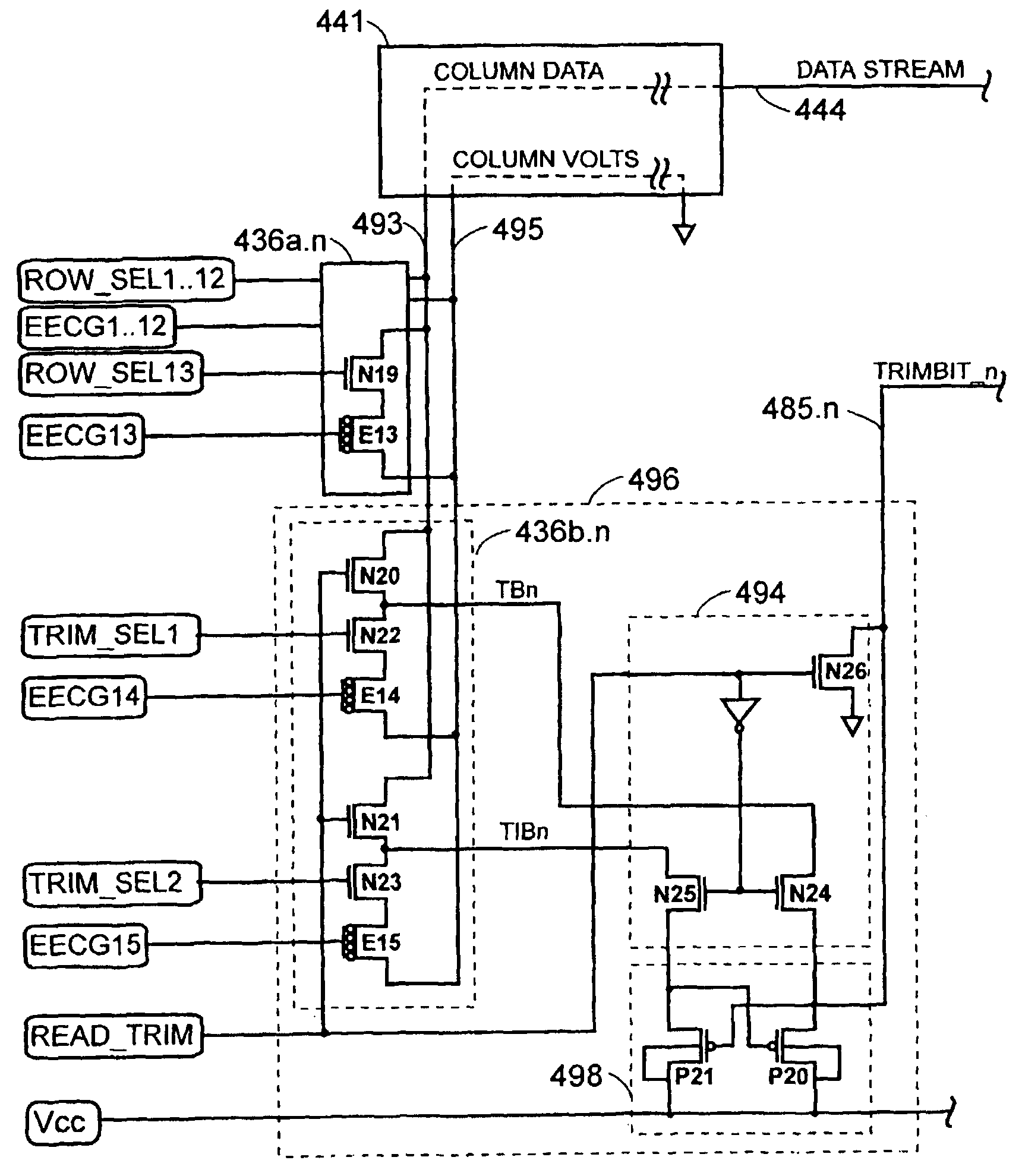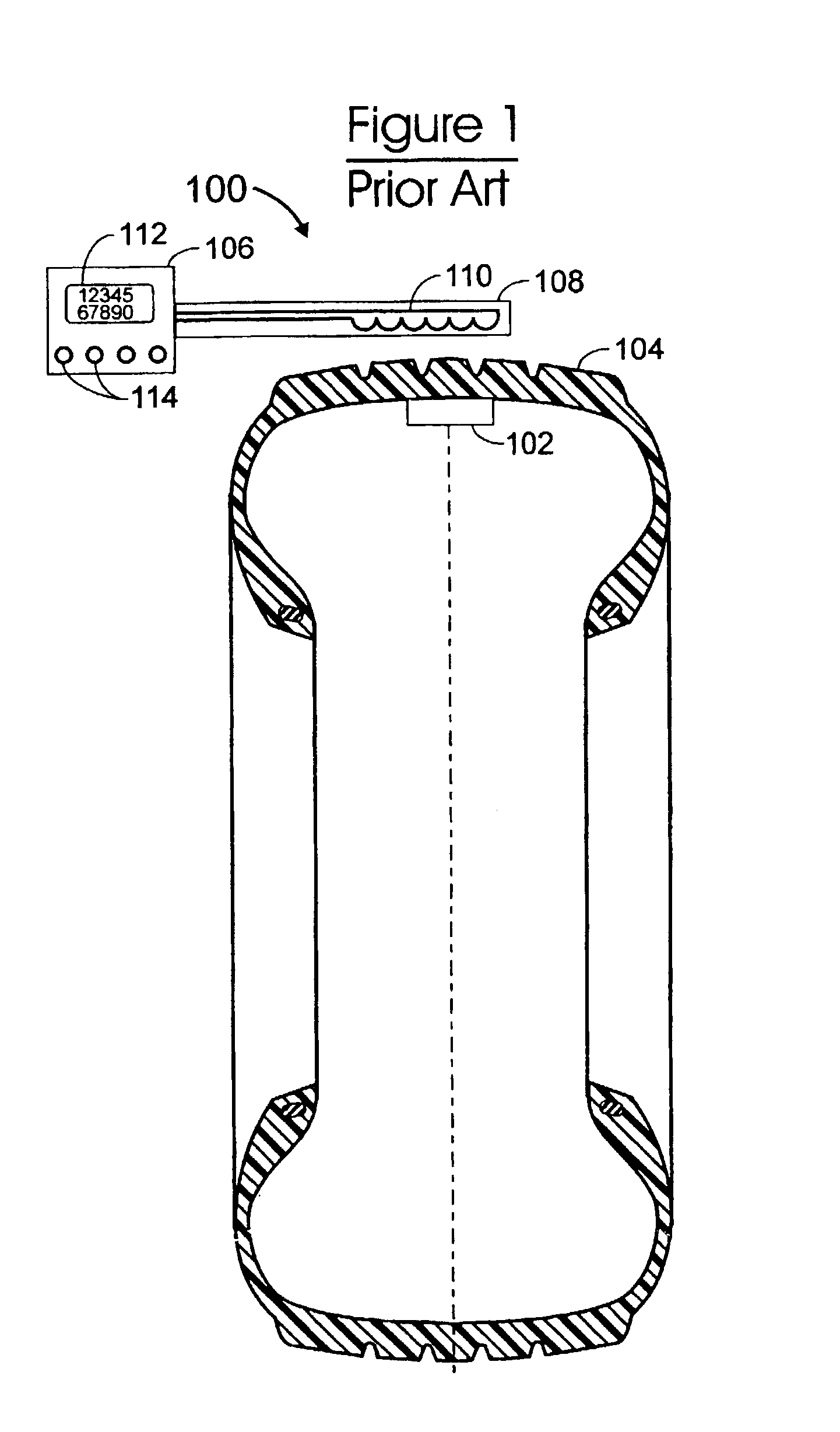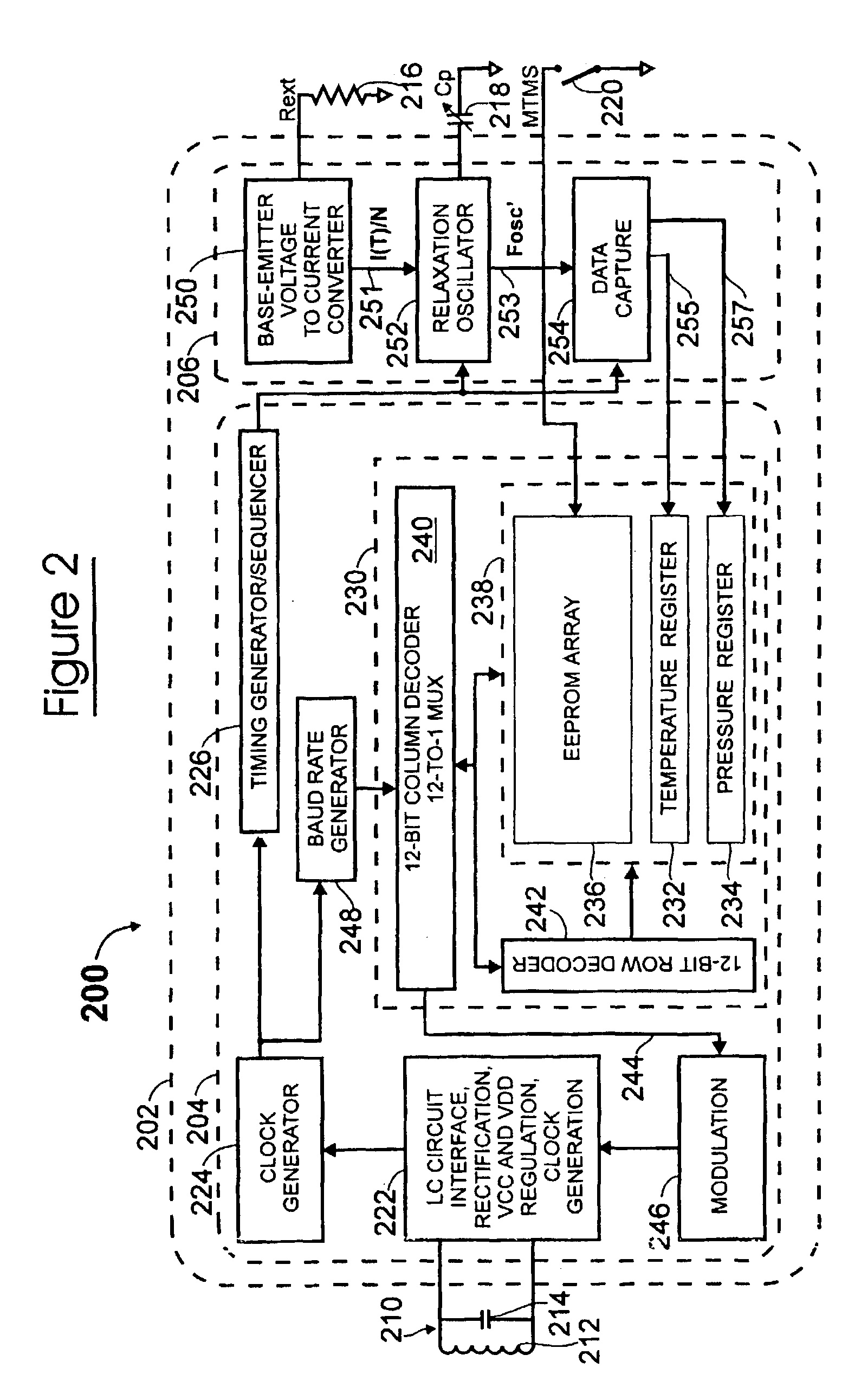Programmable trimmer for transponder
a transponder and programmable technology, applied in the direction of vehicle components, tyre measurements, selection arrangements, etc., can solve the problems of poor road handling, excessive tire wear, poor gasoline mileage, etc., and achieve the effect of increasing the pressure within the tir
- Summary
- Abstract
- Description
- Claims
- Application Information
AI Technical Summary
Benefits of technology
Problems solved by technology
Method used
Image
Examples
Embodiment Construction
[0068]As mentioned hereinabove, it is an aspect of the present invention to provide a system for monitoring vehicle tire pressure and warning the driver when a low tire inflation pressure condition occurs.
[0069]FIG. 1 illustrates an RF transponder system 100 of the prior art, comprising an RF (radio frequency) transponder 102 disposed within (e.g., mounted to an inner surface of) a pneumatic tire 104. (An antenna, not shown, is mounted within the tire 104 and is connected to the transponder 102.) The transponder 102 is an electronic device, capable of transmitting an RF signal comprising unique identification (ID) information (e.g., its own serial number, or an identifying number of the object with which it is associated—in this example, the tire 104) as well as data indicative of a parameter measurement such as ambient pressure sensed by a sensor (not shown) associated with the transponder 102 to an external reader / interrogator 106. The external reader / interrogator 106 provides an ...
PUM
 Login to View More
Login to View More Abstract
Description
Claims
Application Information
 Login to View More
Login to View More - R&D
- Intellectual Property
- Life Sciences
- Materials
- Tech Scout
- Unparalleled Data Quality
- Higher Quality Content
- 60% Fewer Hallucinations
Browse by: Latest US Patents, China's latest patents, Technical Efficacy Thesaurus, Application Domain, Technology Topic, Popular Technical Reports.
© 2025 PatSnap. All rights reserved.Legal|Privacy policy|Modern Slavery Act Transparency Statement|Sitemap|About US| Contact US: help@patsnap.com



